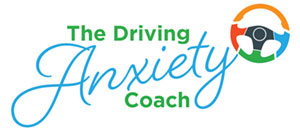Shut Your Mouth and Breathe!
Breathing techniques can be particularly effective in addressing Vehophobia and Driving Anxiety. Many individuals experience anxiety or stress while driving. Incorporating mindful breathing into the drive together with other tools discussed in previous blogs can offer a practical and immediate way to manage these feelings. It is worth practicing these before driving so individuals become familiar with the techniques and how they feel.
Firstly, always shut your mouth. Breathing through the nose is far more beneficial than mouth breathing as it acts as a filter to the lungs in a way mouth breathing cannot offer. Also the very act of nose breathing has a more calming effect on the body.
Here are a few techniques recommended (and practiced) by me to help you either when you are driving or prior to a journey to help calm the nervous system.
Box Breathing: also known as square breathing, is a simple yet powerful breathing technique used by the military that has gained popularity for its ability to promote relaxation, reduce stress, and enhance focus. It involves inhaling, holding the breath, exhaling, and then holding the breath again, each for a specific count, typically four seconds. This rhythmic pattern creates a square, hence the name “box breathing.”
One of the key benefits of box breathing is its impact on the autonomic nervous system, helping to balance the sympathetic (fight or flight) and parasympathetic (rest and digest) branches. By consciously controlling the breath, individuals can activate the relaxation response, leading to a sense of calm and improved mental clarity.
Deep Diaphragmatic Breathing: By consciously engaging the diaphragm and taking deep breaths, individuals can increase oxygen and blood flow to the body and brain, countering the shallow breathing often associated with anxiety. This type of breathing also promotes a sense of grounding and can help individuals feel more centred and in control while driving.
Alternate Nostril Breathing: (Should be done prior to driving as it does involve using one hand to block the nostrils). This yogic technique involves breathing through one nostril at a time. The method is blocking one nostril, breathe, hold, then breathe out through the opposite nostril. Hold, then breathe back in through the same nostril you last exhaled out of. Hold, and breathe out of the first nostril. Normally for the count of four or six. Half a dozen rounds of this helps balance the left and right hemispheres of the brain, enhances focus and calms the nervous system.
Resonant / Coherent Breathing: For those dealing with issues such as congestion and don’t like crowded roads this may be beneficial. Breathing in for the count of 5 or 6 and out for the same count, amounts to 5.5 rounds per minute which has been shown to synchronise heart rate.
All of these techniques should be from the belly for maximum benefit as this helps to stimulate the Vagus Nerve. It is also worth adding that while I have advised these techniques for reducing driving anxiety, they can also benefit individuals in their overall wellbeing too 🙂 .










